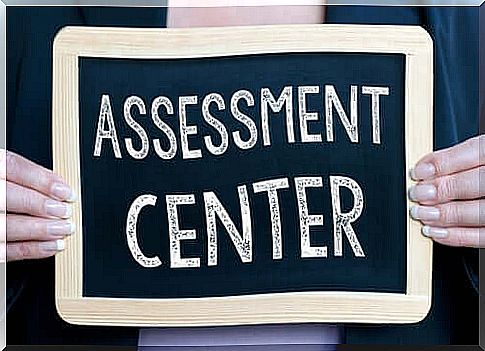Assessment Center: Incredible Situational Test

The world of work is increasingly competitive and it is not easy to choose the right candidate for each role. There are several selection methods, but in this article we will address one of the most current which, moreover, helps to elaborate a forecast of the reactions of candidates in very specific situations. We are talking about the assessment center.
How to choose the suitable candidate? What attitudes need to be considered? What steps to follow? How is a situational assessment test implemented and how effective is it? What to do in an interview of this type? The assessment center is stimulating and knowing it helps to answer these questions.
In the following lines we talk about this skills assessment system that is being applied more and more often today. It is a useful tool for the recruiter and the candidate.
What does the Assessment Center consist of?
The assessment center is a professional skills assessment tool. The name comes from English and means ‘assessment center’. The emphasis is on the observation and traceability of the behaviors manifested by a person based on situational tests.
Several recruiters experienced in this technique are tasked with assessing the skills of candidates. To this end, they propose a plausible situation for the coveted role ; this will make it possible to observe the person’s commitment and foresee the epilogue.

Typical situations are presented which vary according to the characteristics of the role offered. In order to talk about an assessment center, there must always be a moment of simulation. In addition to this, the situation presented must be as similar as possible to the reality of the role to be filled.
It is a useful tool for recording, classifying, analyzing and evaluating the skills demonstrated by candidates. The main features of the Assessment Center are the following:
- Management tool.
- Group application.
- It adapts to the specific competencies of each organization.
- Between 3 and 12 candidates participate.
- It lasts from 4 to 8 hours.
- It can develop over several sessions.
- It includes a moderator, observers and participants.
- Participants are given equal opportunities to demonstrate their skills.
- This technique can be combined with other psychotechnical tests.
The same person who will perform the technique can also process the tests. For this purpose, he / she will have to take into account the skills necessary for the role, the skills required to perform it and that it is related to the objectives of the organization. Furthermore, it will have to be rigorous in carrying out the steps of this methodology.
The most requested skills in the assessment center
Business competencies are the skills, knowledge, attitudes and capabilities defined by a company or organization. They must reflect its values, services, behavioral guidelines and management methods, as well as its strategic objectives.
For example, a sales company will need its employees to demonstrate some leadership. Here are specific skills for each role and it is important to analyze them from three points of view:
- Cognitive. It is the knowledge that a person must have in order to fill a certain role.
- Technical. Knowledge and skills of a role to be filled.
- Attitudinal. It is the person’s attitudes that highlight his ability to achieve results quickly and effectively. Personal qualities, which are needed by the individual to carry out their work, also fall into this group.
Specific skills
Companies are looking for certain skills. We list the most sought after currently:
- Service attitude. Prepare ideas, emotions and behaviors in relation to the customer’s needs.
- Time management. Ability to plan, organize and set strategies to reduce the time required for the activity, optimizing it.
- Verbal attitude. The ability to express oneself effectively, demonstrating a professional and technical language, suited to one’s level, experience and role.
- Numerical data analysis. Ability to analyze, systematize and display numerical data with precision.
- Self control. Ability to manage emotions, thoughts and behaviors in front of a given situation.
- Learning ability. The predisposition to acquire new skills to be used to fulfill one’s role.
- Creativity. Ability to generate new ideas in the workplace.
- I listen. Predisposition to capture and understand information.
- Ethics. Ability to acquire the rules and moral principles of the company and its role.
- Loyalty. Being able to count on a sense of belonging.
How does it take place?
The person responsible for selecting candidates and his team will decide which actions to take before, during and after the assessment center. We describe the various steps:
- Before. We proceed with the elaboration of the profile suitable for the role that will be evaluated in order to have a clear idea of the criteria to be taken into account. For this purpose, it is important to draw up a list of behaviors to observe, develop situational tests focused on the role, look for a suitable environment for carrying out the technique. In addition, the presence of a moderator and examiners will be required.
- During. The behavior of the candidates will be evaluated, taking into account the expected behavior towards the hypothesized situation depending on the role. Then an evaluation will be carried out according to the level of performance; 1 to 5, where 1 equals ‘null’ and 5 equals ‘excellent’.
Alternatively, you can proceed with a qualitative assessment, with total satisfaction of the skills, lack of skills, etc. Thus, every competence will be observed and evaluated. And don’t forget to be clear in the description of the typical situation that candidates will have to simulate.
- After. The examiners will comment on the results, then write a report. Finally, they will communicate the results to the candidates.
Each step must be carried out scrupulously. It is therefore important that the evaluation criteria are clear. Templates can be drawn up to keep at hand during the evaluation phase; furthermore, examiners must ensure assertive communication.
They must have a template that contains the profile criteria, another with the responsibility program, a file with observations, a skill register and a participant file, so that a comparison can be made between the different performances.

How to prepare for an assessment center?
It is useful to take a role in the situation to which one is subjected. This way you will have a chance to demonstrate your skills. Furthermore, it is better not to pretend, as the examiners are highly specialized and know what behaviors are desired in the proposed situation.
Knowing the company helps to discover its values. And while there may not be total certainty, it helps to get closer to what is expected of you. In addition, you must take into account the role for which you are applying, since knowing it in depth instills greater confidence.
Acting as if it were a real situation : this is what examiners expect. For this reason, taking it seriously is the wisest choice. Pretending conveys insecurity, not only through words but also through non-verbal language.
The assessment center is one of the most reliable methods for evaluating and knowing the aptitudes of candidates for a job. This is certainly a great way to assess the competences of the participants, allowing them to demonstrate what they are capable of.
A study conducted by Richard Klimoski and Mary Brickner published in the journal Personnel Psychology states that the assessment center is functional for the purpose of making valid predictions. An effective method if performed rigorously, if conducted by experts and if submitted to the candidate in the right way.
It is increasingly being applied in business contexts, as it offers a preview of how candidates would behave in a specific situation should they get the job. This contributes to a selection process that is beneficial for both parties.









